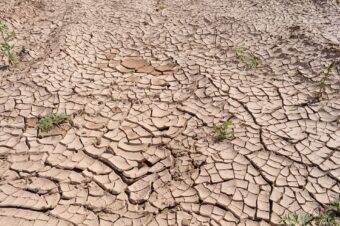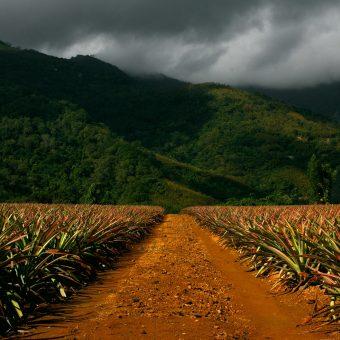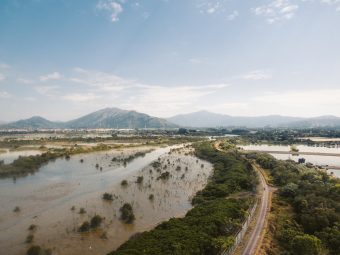
Detailed, comprehensive and timely data is essential to address the impact of shocks such as, earthquakes or conflict on agricultural production and livelihoods in parts of the world affected by food crises.
Since its launch, during the first wave of the COVID-19 global pandemic three years ago, the Data in Emergencies (DIEM) Information System of the Food and Agriculture Organization of the United Nations (FAO) has made it easier for decision-makers to assess the acute food insecurity of agricultural households and analyse its drivers when such shocks occur.
Driven by regularly collected primary data, combined with geospatial data, DIEM is a ground-breaking tool in terms of its size, sophistication, quality and speed. This is the first time that data focussing on agricultural livelihoods in food crisis contexts is being collected on this scale and frequency.
DIEM is currently active in more than 25 food-crisis countries and the DIEM-Monitoring system surveys approximately 150 000 households per year, representing more than 650 million people.
“The DIEM system fills an important gap in our understanding of the impact of shocks on agricultural livelihoods,” said Rein Paulson, Director of the FAO Office of Emergencies and Resilience. “This has great value not only for FAO but for all our partners, allowing us to collectively make improved decisions, including enabling meaningful anticipatory actions as well as response actions.”
More:
- WHEN WE SAVE FOOD, WE SAVE HUMANITY
- LEADING NGOS LAUNCH COALITION TO ADVOCATE FOR FOOD WASTE POLICY
- WHAT YOU NEED TO KNOW ABOUT COMBATTING FOOD LOSS AND WASTE
In Afghanistan, for instance, more than 20 project proposals were drafted using DIEM data, raising more than 400 million USD in 2022 alone, and FAO no longer drafts any proposal for Afghanistan without citing DIEM data. In addition, countries such as Bangladesh, Mali, Mozambique and Sierra Leone now cite DIEM data in their project proposals, thus helping them secure funds for projects on the ground.
Another recent example of its use for FAO partners was in relation to the February earthquake that devastated large areas of Türkiye and Syria. Within days of the event, the DIEM team produced a preliminary analysis of cropland exposed to differing levels of earthquake intensity and displayed this as an interactive map with detail at both district and subdistrict level. This kind of product is fundamental for the targeting of on-the-ground assessments and emergency assistance.
Carpe DIEM

DIEM was developed by FAO and is funded by the Bureau of Humanitarian Assistance of the United States Agency for International Development (USAID), with contributions from the European Union and FAO’s Special Fund for Emergency and Rehabilitation Activities (SFERA).
The platform aims to support FAO Members, United Nations’ agencies, the donor community and other stakeholders in informing decisions designed to trigger the appropriate anticipatory and response actions in support of agricultural livelihoods.
Data is collected multiple times per year in the world’s most food-insecure countries – at household level through computer-assisted telephone interviews and face-to-face surveys – and is published on the Hub rapidly thereafter. Data processing and analysis is completed in just three days, while the entire lifecycle – from data collection to validation and publication – takes just 30 days.
Transparency and open data are key aspects of the project. Anyone can create a DIEM account to explore surveys, navigate dashboards, export maps and download data. This ensures that DIEM activities serve as public goods and that the humanitarian community, academics, media and all stakeholders can benefit from the large amount of data that is available to everyone.
The shocks analysed by DIEM comprise both natural and human-induced hazards. They include climate-related hazards, earthquakes, volcanic eruptions, invasive pests, conflict and violence, as well as economic shocks.

In addition to regular food crisis monitoring, the DIEM platform also provides an integrated picture of the impact of large-scale hazards (severe shocks) on livelihoods and an estimate of the dollar value of damage and losses to the agriculture sector. This is achieved by combining remote sensing, secondary data review, household surveys, key informant interviews, focus group discussions and crowdsourcing surveys.
One interesting example is Pakistan, where DIEM expertise facilitated a Post Disaster Damage and Loss exercise for the whole agricultural sector following the devastating floods in June – September 2022. The results were then displayed on an interactive map on the DIEM hub, which breaks down overall damage and loss into subsectors (crops, livestock, fisheries) per province affected.
DIEM data is also designed to feed into the Integrated Food Security Phase Classification (IPC) process and other humanitarian response programming efforts, for example, as a source of Food Insecurity Experience Scale (FIES)-based measures of recent food insecurity. Over time, this will prove key to improve the coverage and reliability of IPC acute food insecurity assessments in DIEM countries.
Source: FAO



